What constitutes 'remote' in this context needs to be decided through risk assessment, but will typically include situations where we foresee it taking more than a few hours to get a casualty to a suitable medical facility.
What Can Go Wrong?
General Hazards
Anything which causes delay to the casualty receiving appropriate medical care, including:
- Planning failures (e.g. unidentified or impractical evacuation options).
- Communication failures (e.g. equipment or battery failure, poor reception).
- Casualty extraction / handling problems (e.g. lack of stretcher, lack of carriers).
- Transport failures (e.g. breakdowns, unavailability, night / weather restrictions).
- Inappropriate medical facilities (e.g. lack of qualified medical staff, lack of suitable medications or treatment equipment).
Legal/���˿��� Requirements
- There are no specific legal requirements to draw to your attention; you must apply the control measures that are relevant to your medevac plan / risk assessment.
Control Measures
Planning the shoot
- If travelling overseas into a hostile or remote location, contact our Emergency Medical Assistance Provider (EMAP) to obtain a pre-deployment report (PDR) (see Recommended Links). Allow at least 72hrs for its preparation; the longer the notice period, the better. The PDR will identify the nearest suitable medical facilities to your location and availability / suitability of local emergency responders. Our EMAP provide a 24/7 helpline number which can be used for any medical situation, not just emergencies. PDR's can be obtained for any country, but there is a charge if you are neither remote, nor in a designated hostile location.
- If there aren't suitable state-funded emergency responders, you will either need to plan for transporting an injured or ill person yourselves, or identify a suitable emergency transport provider. If the latter, obtain (and check) their contact details, their likely response times and any limitations in their service (e.g. can they come at night, during local holidays, do they need pre-stocked fuel dumps, etc.?). It may be necessary to have more than one transport option. If you can, agree with them suitable pick-up points ahead of your shoot, marked on duplicated maps and with GPS (lat/long) co-ordinates.
- Given your crew size / age / health, the nature of the risks on location and your remoteness, assess the first aid capabilities required. Remember, whoever is to be your first aider, they need to be confident treating and monitoring a seriously ill or injured casualty for a prolonged period; in some cases, a specialist medic or paramedic may be appropriate (if in doubt, speak with your Safety Adviser).
- If there are transport limitations on location, be prepared to extract / carry your casualty, for example, to a helicopter landing site (HLS) or road. Do you have a stretcher and sufficient people to perform the carry?
- Ensure you will have reliable means of communication within teams on location and to the outside world, including a back-up (and spare batteries), and ensure crew know how to use it.
- Ensure you will be able to pinpoint your exact location (with GPS or map/compass) and crew know how to use them – GPS co-ordinates can be pre-determined using various websites (see Recommended Links)
- If very remote, consider taking a personal locator beacon (PLB) or emergency position-indicating radio beacon (EPRIB). Ensure you know how to use it and that you register it with the UK Beacon Registry before you go (see below).
- Obtain next of kin details for all crew / contributors; this information is confidential and should not be distributed outside of your team.
- If needed contact your safety advisor to help you develop / review your plan.
Documentation
- Record your medevac arrangements within your programme risk assessment form (if straightforward) or on a ���˿��� Medevac form (if complex) with copies held by the production office. See Useful Documents (r/h margin) for ���˿��� templates and checklists.
- Consider the need for laminated ‘emergency cards’ giving key contact info, pick-up locations, etc.
- If using a UK 406MHz Beacon – before you go, you must register the beacon - see Recommend Links below for online to register. Registry contact details: Tel. +44 (0)20 3817 2006; Email (mailto:ukbeacons@mcga.gov.uk)
Division Specific Issues
News
- The ���˿��� Safety High Risk Team have a number of small tracking devices (like a PLB but with text / email capabilities) available for use by Newsgathering when in remote or dangerous locations.
FAQs/Did You Know?
- Dealing with emergencies can be traumatic. The Employee Assistance Programme (EAP) and TRiM network are there to provide emotional support to employees who have had to deal with traumatic events (see Recommended Links (Gateway)). Whilst the EAP is an employee benefit, it can be made available to freelancers under certain circumstances (contact HR for advice).
Useful documents
-
[Gateway]
-
[Gateway]
-
[Gateway]
Recommended links
-
[Gateway]
-
[Gateway]
-
[Gateway - PDR contact details at bottom of text]
-
[Link to Academy site - Login in and search for: First Aid in Remote Locations]
-
-
Managing Incidents / Accidents topics
-
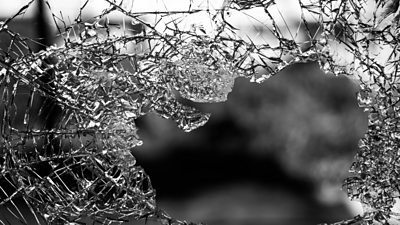
Accident Reporting and Investigation
This Safety Guideline describes how we manage, report and investigate accidents. -
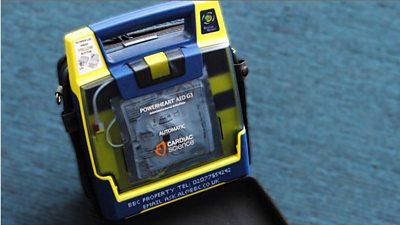
Automatic External Defibrillators
Information on using an Automatic External Defibrillator -
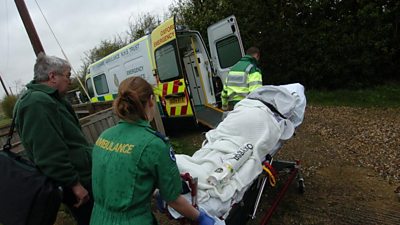
First Aid and Welfare on Location
A guide to provision of first aid and welfare facilities when working on location, away from base. -

First Aid in ���˿��� Premises
This page supplements the guidance to first aid on productions. It provides arrangements for contacting ambulances and the National Central Control Room (NCCR). -
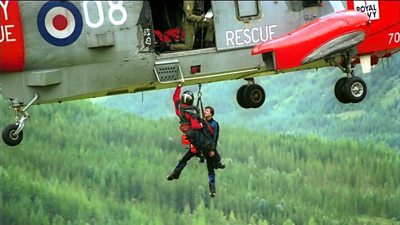
Medical Emergency Evacuation
Guidance in the event of staff becoming seriously ill or injured in countries and locations remote from emergency medical services. -
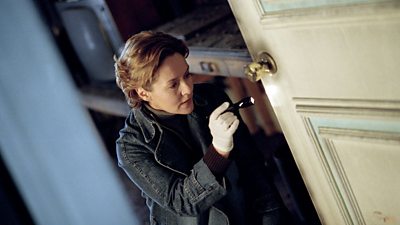 [Staff only] Security threats to the ���˿��� can and do manifest as a serious incident resulting in fatality, injury, programme and service loss, damage to property, reputation issues, and financial loss.
[Staff only] Security threats to the ���˿��� can and do manifest as a serious incident resulting in fatality, injury, programme and service loss, damage to property, reputation issues, and financial loss.
More from SSR
-
Your platform to record accidents, risk assessments, assurance monitoring and inspections
-
Safety Equipment Stores
Just one number to call: 020 3614 5155 -
���˿��� Safety Guidelines
An A-Z of ���˿���'s Health and Safety Guidelines -
Safety Advice Line: 0370 411 0464 Email: safety@bbc.co.uk
- A-Z of ���˿��� Safety Guidelines
- Accident Reporting and Investigation
- ���˿��� Health & Safety Policy
- Contractors (incl. vetted lists)
- Contributors
- Fire Safety
- Freelancers
- Independent Production Companies
- Risk Assessment
- Safety Alerts
- Safety Responsibilities
- Safety Training
- Sets & Premises Safety Guide
Events guidance - key links:
- Exhibitions
- General Guidance
- Indoor Location Recce Checklist
- Outdoor Location Recce Checklist
- Major Incidents & Emergency Planning
- Marketing and Promotional
- Noise Exposure
- Planning and Management
- Responsibilities
- Responsibilities Form
- Laser Lighting Effects
- Strobe Lighting
- Temporary Stages and Rostra
Health topics - key links:
- (���˿��� network only)
- Contributors Fitness to Participate
- Display Screen Equipment (DSE)
- (���˿��� network only)
- First Aid and Welfare on Location
- International Travel - Risks & Health
- Manual Handling
- Mental Health: ���˿���page
- (���˿��� network only)
- Personal Health and Wellbeing
- Pregnancy
- Psychological Trauma Support & Trauma Risk Management (TRiM)
- Tiredness and Fatigue
- Travel Health Contacts
���˿��� High Risk - key links:
- CBRN and Industrial Spills
- Covert Filming
- Crisis Management and Security Support
- Demonstrations, Protests and Crowds
- Disaster Coverage
- Door Stepping
- (���˿��� network only)
- (���˿��� network only)
- Public Order
- Safety Equipment Stores
���˿��� Journalism - key links:
���˿��� Productions - key links:
- Aerial Filming and Airfields
- Animals: Displaying and handling for performance
- Boats: Working on
- Children and Young People
- Driving
- Electrical Equipment and Systems
- First Aid and Welfare on Location
- Food Safety (Cooking and Catering)
- Remote Location Working
- Roads and Streets: Working by
- Security of Productions on Location
- Stunts
- Tiredness and Fatigue
- Unmanned Aerial Systems (UAS aka Drones)
- Vehicles: Recording in, from and around
- Working at Height: Mobile Elevating Work Platforms
- Working at Height: Tower Scaffolds
���˿��� Radio - key links:
- (���˿��� Network only)
���˿��� Security - key links:
���˿��� Sport - key links:
About this site
This site describes what the ���˿��� does in relation to managing its health, safety and security risks and is intended for those who work directly for the ���˿���.
It is not intended to provide instruction or guidance on how third parties should manage their risks. The ���˿��� cannot be held liable for how this information is interpreted or used by third parties, nor provide any assurance that adopting it would provide any measure of legal compliance. More information
Some links on this site are only accessible when connected to the ���˿��� network
